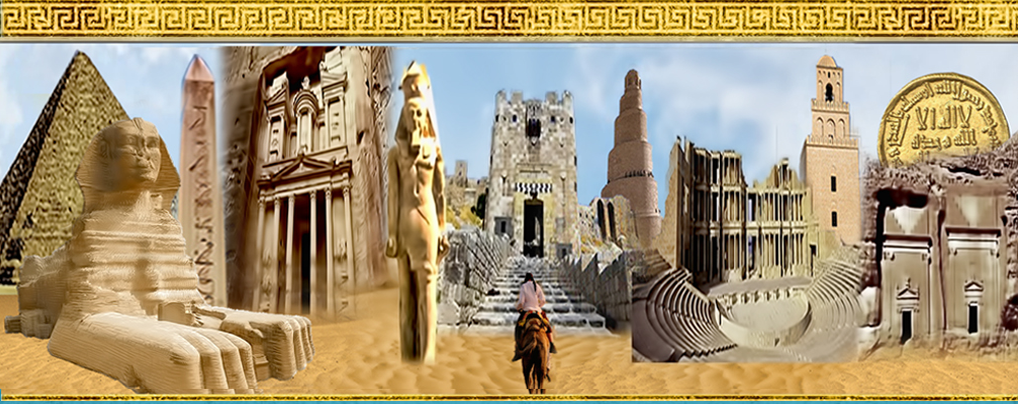Journal of the General Union of Arab Archaeologists

Abstract
(En) The word ceramic is a term taken directly from the western world. It had been used to define the pots crafted in tile technique. In the Ottoman records “Evanî” was used instead of ceramics and “Kaşî” for tiles. This paper deals with the history of pottery in the Islamic world and in Europe. Islamic world is represented by Iznik. Iznik, historically Nicaea, town in the northwestern of Turkey. It lies on the eastern shore of Lake İznik. In 1331 A.D, Nicaea was besieged and conquered by the Ottoman Turks, who renamed it İznik. On the other hand, European pottery is represented by Italian maiolica. Such wares were produced in both the northern and the southern parts of Italy, but the wares were distinctly different.
A distinctive point of this research is the political and economic relations between the Ottoman Empire and Europe, and their influence on pottery production.
The main objective of this paper is dealing with themes of exchange in pottery production, between Iznik in Turkey, and Italy in Europe. This exchange took shape in the emergence of a special form of ceramic plates of Italian tradition in Iznik. This type of ceramic plates known as “Tondino” dishes. These plates had a characteristic form, they are composed of broad flattened rim with a deep well. This form of plates was fashionable in Italy around 1500-1530. Iznik workshops had produced identical samples of tondino plates in the contemporary period as well.
On the other hand, decorative elements of Iznik had greatly influenced Italian maiolica production. Of these spiral scrolls of the “Golden Horn”. ‘Golden Horn’ style is one of shapes of Chinese influence in the Near East. This style was imitated on Italian maiolica Albarello vessels. However, such influence did not come directly from china, but Iznik was a mediator. Furthermore, decorative elements of Rhodian style with their characterized polychrome design are imitated in Paduan workshops of Italy. This style showed a sudden change in the color scheme of Iznik pottery. Pale turquoise is applied for details, cobalt blue for the ground, however, green is lacking. Paduan imitation of Rhodian style was a clear form of adulation to the Ottoman Empire in the 17th century A.D
In addition, various plates of Iznik production had combined between traditional decorative elements together with European heraldry of famous Italian families such as Venetian family of Morosini or the Dalmatian family Spingarolli de Dessa. Thus, such samples specifying a true image of the cross- cultural exchange between the Near East and the West.
This paper aims at:
II. Shed light on the role of Muslim artisan in ceramic industry and their effect on the Western civilization, Italy in particular.
IV. Emphasizing that Muslim artisan had been influenced by the civilization of the West and adapted what suits their tradition and religion as well.
V. Illuminates on the influence of political and economic status of the Ottoman Empire and Italy on all industries; and ceramics in particular.
(Ar)
يتناول هذا البحث اشکال التبادل الحضاري في صناعة الخزف ما بين العالم الإسلامي متمثلاً في خزف ازنيک الترکي، والخزف الأوروبي والذي يمثله الموليق الإيطالي. أحد اشکال هذا التبادل هو ظهور شکل مميز من الأواني الخزفية إيطالية المنشأ ضمن خزف ازنيک. هذا الشکل عُرف باسم اطباق "التوندينو" والتي کان لها شهرة في إيطاليا في الفترة ما بين ١٥٠٠- ١٥٣٠م. اشکال مماثلة لهذه الاطباق إيطالية المنشأ تم انتاجها في ورش ازنيک في نفس الفترة الزمنية. وعلى الجانب الآخر، العناصر الزخرفية التقليدية التي شاع استخدامها في خزف ازنيک کان لها تأثير في زخارف الموليق الإيطالي. ومن هذه التأثيرات زخارف "القرن الذهبي" التي اتخذت الاشکال الحلزونية أحادية اللون (الأزرق). مثل هذه الاشکال الحلزونية تم تطبيقها على اواني الالبريلو من الموليق الإيطالي. شکل آخر من التأثيرات الترکية على الموليق الإيطالي هو زخارف رودس متعددة الألوان والتي تم تطبيقها في ورش تصنيع الخزف في بادو. شکل آخر من التبادل او ربما الاندماج الفني هو الجمع ما بين الزخارف الترکية التقليدية جنباً الى جنب مع بعض شعارات النبالة الخاصة ببعض الأُسر الإيطالية. مثل هذه النماذج تسهم في تقديم صورة جلية عن التبادل الحضاري ما بين الأمم.
يهدف هذا البحث إلى
إلقاء الضوء على دور الفنان المسلم في صناعة الخزف، وأثره على الحضارات الغربية، وبالأخص الحضارة الإيطالية.
التأکيد على تأثر الفنان المسلم بالحضارات الغربية، حيث نهل منها ما يتناسب مع تقاليده ومعتقداته الدينية.
إلقاء الضوء على الحالة الاقتصادية والسياسية لکل من الإمبراطورية العثمانية وإيطاليا وتأثيرهم على مختلف الصناعات، وبالأخص صناعة الخزف.
Recommended Citation
Zidan, Boussy
(2019)
"CROSS- CULTURAL EXCHANGE BETWEEN THE ISLAMIC WORLD AND EUROPE (IZNIK CERAMIC AND ITALIAN MAIOLICA AS A CASE STUDY),"
Journal of the General Union of Arab Archaeologists: Vol. 4:
Iss.
2, Article 1.
Available at:
https://digitalcommons.aaru.edu.jo/jguaa/vol4/iss2/1

